Interview with painter Haydn Dickenson
Haydn Dickenson was born in Hertfordshire in the United Kingdom where he still lives and works, specialising in large, subtly exuberant free abstract pieces. In his unique work on canvas and board, collage, acrylics, oils and other media collaborate in a suggestive dance of colour, texture and form - at times urgent and vital, at others calm, meditative and spiritual. Haydn is inspired by the natural world, and by Humanity, Psychology, Mysticism and Spirituality. Musical references also appear – His former career was as a Concert Pianist.
 |
| Haydn Dickenson |
How and when did you begin making art and in what way do you think your background as a classical concert pianist influenced your art and style?
From a very young age I always loved to paint and draw. My mother was a fine painter, rigorously trained at art schools and colleges and later going on to teach Art herself. She encouraged me so devotedly in drawing and painting when I was young and I am so grateful for that nurturing. As a withdrawn, often unhappy child, drawing was my solace. Later, at school, my maverick approach to painting was already apparent, and my teachers did not like that! In my early teens my other passion developed, that of classical piano-playing which was my father's obsession and in which I had also been encouraged and possessed a talent. Unfortunately there was some conflict as to which path I was to follow, and Music took precedence during my adolescence despite me having won awards for my Art. As for how Music has influenced my visual art, in my opinion the two disciplines are simply different ways of channelling the same artistic spirit. The classical pianists whom I admire most are from the so-called 'Golden Age', the early twentieth century, when interpretations of music were highly personal, immediate, passionate and spontaneous. Playing the piano in this way – as I also seek to do – seems to me to be very much akin to making wild gestural marks on a canvas. Music is rooted deep in my soul. I have music running through my head at all times; not only classical, but jazz (which I adore), vintage rock and other genres. John Coltrane, the Doors and others are as important to me as Bach and Brahms. Sometimes, in my paintings, the melodies may be 'submerged', sometimes they flood to the surface. I consider the marks made by my brush to be music too; just as when I play the piano, I paint with sound.
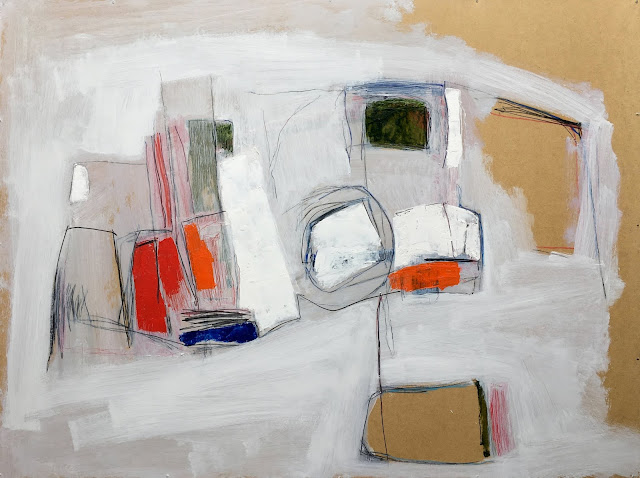 |
| THROUGH THE LOOKING GLASS |
We are interested in what you describe as the remarks made by people about the musical qualities in your paintings. Please tell us more.
In my performing career, I became associated with music by living composers, many of whom dedicated works to me. Echoes of this cutting-edge contemporary music can perhaps be seen in my abstract visual work. Moreover, just as music thrives on dissonance as well as consonant harmony, so must there be an element of conflict in visual art, too. Nothing should be too 'comfortable'. One is reminded of the epic struggle in, say, the late piano sonatas of Beethoven or in many of Chopin's Nocturnes, in which an element of terror exists against the more tranquil, lyrical aspects.
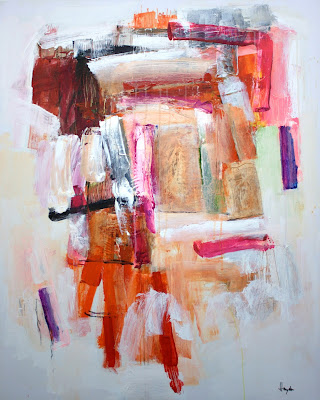 |
| UNTORN |
How does your style in abstract painting using line, texture, shape, form and color differ from that of other artists?
I never imitate. Of course I imbibe and absorb energy from the many great artists whose paintings and drawings fascinate and move me. Every artist is capable of developing an individual 'voice' however, and I hope I am no exception. I aspire to what Patrick Heron called 'Pure Visual Beauty', which leaves endless possibilities open to the abstract artist. Many devotees of my work have remarked that it is unique and not derivative, which pleases me, but it is up to them and not me to say how!
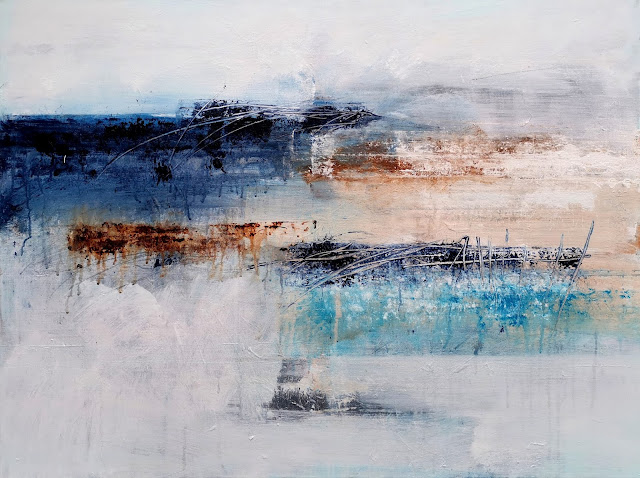 |
| THE WAY THE WAVES COME IN |
In the near future, what kind of art do you aspire to achieve and why?
I simply wish to continue developing and growing as an artist. I want my paintings to speak to people, to make them think and more importantly, to make them feel. My paintings have been described as 'sensual', which is a great compliment to me; painting seems to me to be a very sensual act. My work is indeed purely abstract. It starts life without any figurative reference; if apparent representations appear to the viewer, that is up to them – they are never placed there by me. Picasso stated that “There is no such thing as 'pure abstraction', because you have to start with something”. But what is that 'something'? When we look at an abstract painting, the object of our gaze is reality itself – the artist's heart laid bare on the physical canvas. In contemplating nature, our minds and souls can drift into subconscious realms – are these real or are they imagined? In the same way, we can see abstraction in the infinite patterns of nature, notwithstanding that nature exhibits a divine order. When I paint shapes, or 'take a line for a walk' as Paul Klee liked to do, the viewer may see echoes of finite, concrete objects or beings; but when I make that line, I am most content when it exists for a reason no more or less great than the sheer joy of its creation, unfettered by concrete references. Composition is as important in Abstract Art as in more traditional forms; chaos can coexist alongside order, and I greatly enjoy revelling in this dichotomy. I adhere to no 'rules' in my work though, compositional or otherwise. The great pianist Jorge Bolet told us that there are no absolutes in music – for me, the same applies to art! In any case, much of what we do, in all art forms, happens without our intervention. Every painting is a journey. The shift from completing one canvas to beginning the next is yet another. Let's see where the path leads.
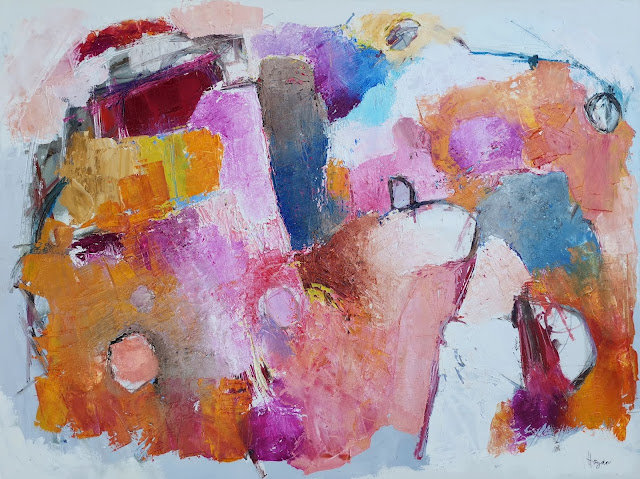 |
| ECHOING BACK |
From whom and from where do you draw inspiration? What is your unique process?
Artists whose work will never cease to move and astound me include Bacon, Cezanne, Heron, Freud, De Kooning, Malevich and many others in no particular order. I adore the natural world and am fortunate to live close to nature. For this reason it is not surprising that the colours and rhythms of nature find their way into my tonal and gestural palette. Dreams, psychology, spirituality and the subconscious also infuse my canvases. Abstraction allows me to give vent to my fascination with these subjects. In painting, I prefer to delve beneath the surface and reflect submerged or hidden realms, rather than to imitate the glory of nature or of the immediately obvious. Nature – which profoundly moves me - influences my work deeply, but emotionally and spiritually rather than in a literal sense. As for process, I often begin with collage, as I'm a little obsessed with the different surfaces that can be obtained by layering paper (often antique music scores) onto the canvas before painting on top of it. I often work 'alla prima', especially when painting in oils. Mark-making with graphite sticks and other media is also frequently present, and I love the act of scratching-back with a knife or pointed tool – this appeals to me as it means I'm going back behind the surface to something hidden, even perhaps to the canvas itself, the pure core. The 'pure core', in any case and as an ultimate destination, seems to be something worthy of an artist's voyage.
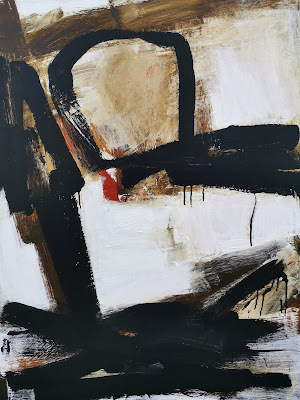 |
| DESTRUCTION CONSTRUCTION |
More info:
Facebook: https://www.facebook.com/HaydnArt
Twitter: https://twitter.com/haydndickenson
Instagram: https://www.instagram.com/arthaydn


